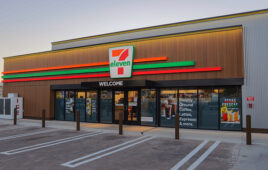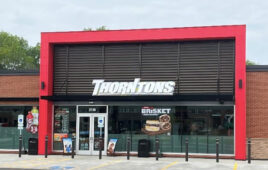Educational sessions discuss family business planning and artificial intelligence/robotics during the first day of the NAG Conference.
By Erin Del Conte, Senior Editor
The National Advisory Group (NAG) Conference kicked off on Sept. 9, at the Ponte Vedra Inn & Club in Jacksonville, Fla.
At a welcome dinner on Sunday evening, keynote speaker Rocky Sickmann, vice president of Folds of Honor, a recent retiree of Anheuser-Busch and a survivor of the Iran Hostage Crisis, told attendees of his harrowing ordeal as a hostage and his eventual release.
Sickmann served in the U.S. Marine Corps at the American Embassy in Tehran, Iran in 1979 when Iranian militants stormed the embassy and took hostages. Sickmann spent 444 days in captivity. Today, he works with Folds of Honor, established in 2007, to provide educational scholarships to spouses and children of fallen or disabled service members.
Attendees closed out the night networking in the beach-side hospitality suite.
On Monday, Sept. 10 attendees began the day with a complementary breakfast and educational sessions on two burning issue topics: family business planning and how artificial intelligence/robotics are set to impact business.
John Lofstock, executive director of NAG, welcomed the attendees to the conference. “This year we have 65 convenience store chains in attendance as well as 22 new-to- NAG members and speakers from 22 different convenience store chains,” he noted.
Lofstock announced Robert “Bob” O’Connor, president of Jetz Convenience Centers, as the new chairman of the NAG Board of Directors. O’Connor takes the reigns from Peter Tamburro, the general manager of New York-based Clifford Fuel Co., for a one-year term helping to oversee the direction of NAG and content for its annual conference.
“My hope is that when you return home (from NAG), you return home with some great memories and also some ideas, tips and tricks to generate a wonderful ROI,” O’Connor told attendees.
Burning Issue 1: Family Business Planning
The first educational session focused on family business planning and building a corporate culture from the top down. Speakers Charley Jones, president and CEO Stinker Stores; Steve Loehr, vice president, operations support, Kwik Trip Inc.; and John Peyton, president, Gate Petroleum, each shared their family business journey in creating and implementing a vision that reaches all the way down to frontline employees.

From right: Moderator John Lofstock, NAG executive director, with speakers Charley Jones, president and CEO Stinker Stores; John Peyton, president, Gate Petroleum; and Steve Loehr, vice president, operations support, Kwik Trip Inc.
Family businesses are the backbone of the convenience store industry. The values at play in a family compared to those needed to run a successful business, however can at times be in conflict. Having a solid corporate vision and values to live by can help lead the way through difficult terrain.
Peyton outlined Gate Petroleum’s vision, “to support a family culture that delivers best in class products and services to our customers so that every member of our team can enjoy a more secure and prosperous life.”
The company operates according to a set of specific values that tie into executing that mission every day. He pointed out that employees are the key to success when it comes to implementing those values at store level. To achieve that goal, Gate focuses on hiring and talent development, internal promotions and preparing next generation leaders. He noted that associates must see and feel management’s commitment to the visions and values it aspires to live by.
Charley Jones, president and CEO Stinker Stations, spoke about how Stinker Stores began and grew into the chain it is today. He outlined the shared values everyone at the company is expected to embody. Stinker Stores, he noted, is a people centered business.
“The focus is on people over transactions. We teach our people how to be hosts,” he said. He also hires extroverted, friendly people. “We look for hosts and hostesses. We tell these folks customers are your guests, welcome them, be proud of your store and coworkers.”
Stinker Stores prides itself on taking care of its people with competitive pay and benefits, including a health insurance package that was in place before the Affordable Care Act became law. After six months of employment, all employees can participate in the company’s profit sharing plan.
“That’s including the high school kid working 4-5 hours a week. Our profit share is about one month of extra pay every year,” Jones noted.
Jones added that a big part of what makes his company successful is accountability. “Know the score. Keep the score. The score will improve,” he said.
Steve Loehr, vice president operations support, Kwik Trip, outlined his company’s mission statement as: “To serve our customers and community more effectively than anyone else by treating our customers, co-workers and suppliers as we personally would like to be treated and to make a difference in someone’s life.”
Loehr told the story of how a tornado had damaged a co-worker’s car in Iowa.
The company bought her a car so she could commute to work, and the line “make a difference in someone’s life” at the end of its mission statement was born.
KT’s culture includes committing to the business, sharing profits with all co-workers, motivating co-workers, communicating everything it possibly can with coworkers, appreciating everything co-workers do, listening to everyone and figuring out how to get people talking.
Loehr noted the two things that can ruin a business are a decay of culture from within, which is why training is vital to ensure the culture continues, and a foodborne illness.
The speakers explained the recruiting and interviewing processes they use that allow them to continue to build and protect their cultures.
“Attitude at the top of the organization sets the tone,” advised Peyton. “Then it’s our job to make sure we reinforce those founding principles. Selection is key. Finding the right people. Taking the time. Making the hard call if it’s not working out.”
Burning Issue No. 2 Artificial Intelligence (AI) and Robotics
In a session titled, “The Machine Revolution: Are Robotics Right for Convenience Stores?” attendees learned artificial intelligence is already here and set to proliferate retail within the next 10 years, making lives easier for employees.
“Technology is a part of our business you want to deploy and embrace,” noted Jetz’ O’Connor as he moderated the session that featured speakers Paul Martin, head of retail, UK KPMG; and Marco Mascorro, cofounder and CEO of Fellow Robot.
Martin explained that the fourth industrial revolution is alive and well in retail, and outlined key trends shaping the retail landscape.
Both cognitive automation—teaching an algorithm to replace the human brain and teaching it to make decisions on our behalf— and physical automation are already here today.
Tally, for example, was piloted by Target to browse aisles with an infrared scanner and count 20,000 to 30,000 SKUs an hour. It took Tally one hour to do what humans did in four hours. Automated dispensers, chatbots and driverless trucks are all other examples of artificial intelligence already being piloted across the globe.
“Think of areas where you can make a tangible start with artificial intelligence. If you don’t act on it, your competitors are acting on it,”Martin said. “You can partner with organizations. Be agile. This technology is evolving and there are lots of opportunities.”
Mascorro explained that AI is changing the way we make decisions. Algorithms are taking decisions away from people and using data to make better decisions.
One place AI can particularly help retailers is with controlling out-of-stocks in stores.
For example, through a pilot at BevMo, a wine and liquor store in California, a robot scans out of stocks and informs employees via text that an SKU needs to be restocked. It empowers employees to work more efficiently and spend more time interacting with customers. The robot can also measure associates’ performance metrics.
As robots evolve and become mainstream over the next decade, Martin noted it will have an extensive impact on the workforce. “Robots will make the lives of people in distribution centers easier. We’ll need more data scientists and mechanics…people will have to teach themselves new tricks.”
He added, “We are going to have to teach our (employees) to be really good at interacting with human beings. It’s going to be a long time before robots can replace humor, empathy and human traits.”
“We see this even today where robots are in the store, they’re not working together—employees are helping customer as robots are doing inventory,” said Mascorro. Humans are happier. They don’t like inventory. They send the robot to scan and know what to focus on. There are things machines are good at and things humans are good at. For example, it’s hard for a robot to take a box and put it on a shelf, but that’s easy for a human to do.”
O’Connor envisions smartstores of the future that can determine customer and car needs. “I think our stores are going to become extremely intelligent over next 25 years and allow employees to be more human and interact with customers on a human level.”
Info Exchanges and Golf Outing
Convenience store retailers participated in information exchanges with non-competing retailers. The information exchanges are the ‘heart and soul’ of NAG and part of what makes it unique.
Following the information exchanges attendees had the option of attending a golf outing or a tour of Jacksonville, Fla. and local convenience stores, including Wawa, Circle K, RaceTrac, First Coast Energy/Daily’s and Gate Petroleum.
The NAG Conference runs through Wednesday, Sept. 12.




